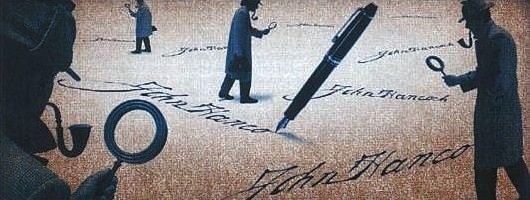 Intellectual property theft is an all too common crime. People continually steal ideas, formulas, inventions and creative expressions. In many cases, there are gray areas that make intellectual property theft difficult to prosecute.
Intellectual property theft is an all too common crime. People continually steal ideas, formulas, inventions and creative expressions. In many cases, there are gray areas that make intellectual property theft difficult to prosecute.
I thought you might be interested in a challenging case that we were able to resolve.
John Smith (the subject*) was working for a high tech company. We’ll call it “Company A”.
He signed a non-disclosure agreement regarding the company’s intellectual property.
After working there for several years, he was fired and joined a competitor. We’ll call it “Company B”.
In direct defiance of the non-disclosure agreement he signed, John sent letters to clients of “Company A” providing them with confidential information. When the CEO of “Company B” discovered this fact, he called the CEO of “Company A” and informed him about it.
Brayer Handwriting International was retained by an investigative firm to identify which of the 4 suspects authored the writing on the envelopes.
We examined all the documents and found a perfect match. John’s handwriting was consistent with the handwriting on the envelopes.
The investigator then scheduled a meeting with John.
He told him the following:
“We took the evidence to a fingerprint expert.”
“We know the date you were in the post office based on the postmark on the envelopes that were mailed. I’m assuming you’re aware that all post offices have security cameras.
“We gave the handwriting on the envelopes to a forensic handwriting expert who concluded that the handwriting on the envelopes is consistent with yours.”
“Now, you can either admit it or we can notify FINRA. It’s your choice.”
The investigator didn’t mention that the fingerprint expert was unable to identify John’s fingerprints and that the camera in the post office wasn’t working on that day. And, clearly, he didn’t mention that the only tangible piece of evidence was the anonymous writing on the envelopes.
John came clean. He cooperated with the authorities and admitted that it was indeed his handwriting on the envelopes.
“I did it out of anger and spite,” he told the investigator.
He ended up paying $100,000 to “Company A” to cover the cost of the investigation.
When we called the investigator a week later for feedback, he said, “Your analysis was the nail in the coffin.”
* The names have been changed to protect their identity.
Need a handwriting expert to crack your case? Contact Ruth Brayer. Ruth is a court qualified handwriting expert, specializing in authenticating handwriting. Her practice covers a wide spectrum, from consulting, to court testimony, to speaking about the legal and behavioral aspects of handwriting.